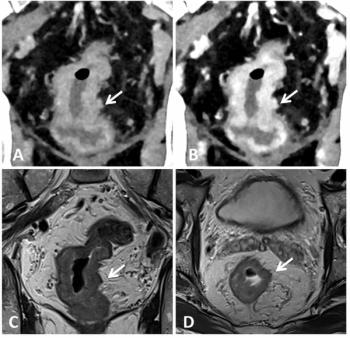
Two-Tiered MRI for Hearing Loss Assessment Cost-Effective
A two-tiered approach with MRI to assess for hearing loss is more cost effective than comprehensive MRIs, but just as effective.
A two-tiered approach to MRI is more cost-effective but still diagnostically effective in evaluating patients with hearing loss, according to an article published in the
Researchers from St. Louis, Mo., and Bethesda, Md., sought to evaluate the cost-effectiveness of two approaches to using MRI - two-tiered and comprehensive - to evaluate patients experiencing hearing loss. The two-tiered model used initial 3D 2T-weighted imaging examination, which was used to determine the need for more comprehensive scanning.
The researchers retrospectively identified 122 men and 134 women with sensorineural hearing loss, ranging in age between 20 to 88 (mean age, 54.8 years), who had undergone MRI of the brain and internal auditory canals between November 2009 and July 2011.
Three independent radiologists blindly reviewed the 3D T2-weight images to determine if there was a need for more comprehensive MRI screening, which would involve multiple parameters with or without contrast.
Costs were defined in terms of both the scanner utilization time for the imaging facility and the dollar amount for payers, and were estimated using 2012 reimbursement rates from the U.S. Centers for Medicare and Medicaid Services (CMS). Effectiveness was defined in terms of the ability to correctly detect the presence or absence of disease.
The researchers found that the two-tiered approach was more cost-effective than the conventional approach. There was a baseline incremental cost-effectiveness ratio (ICER) of 27,299 minutes of scanner utilization per unit increase in effectiveness.
“Assuming a 50 percent reduction in the reimbursement of the technical component from the current level by the Centers for Medicare and Medicaid Services, this result reflected an ICER of $258,664 per unit increase in effectiveness,” the authors wrote. The two-tiered approach took a mean of 8.8 minutes, while the conventional MRI approach took 37 minutes, significantly decreasing time per patient with the scanner. Limiting the use of comprehensive MRIs not only reduces patient time in the scanner, but use of IVs and contrast material.
“The results of a sensitivity analysis showed the robustness of the cost-effectiveness of the two-tiered imaging approach in a variety of scenarios that reflect differences in scanning practices and possible differences in recall rates,” the authors noted.
Newsletter
Stay at the forefront of radiology with the Diagnostic Imaging newsletter, delivering the latest news, clinical insights, and imaging advancements for today’s radiologists.



























